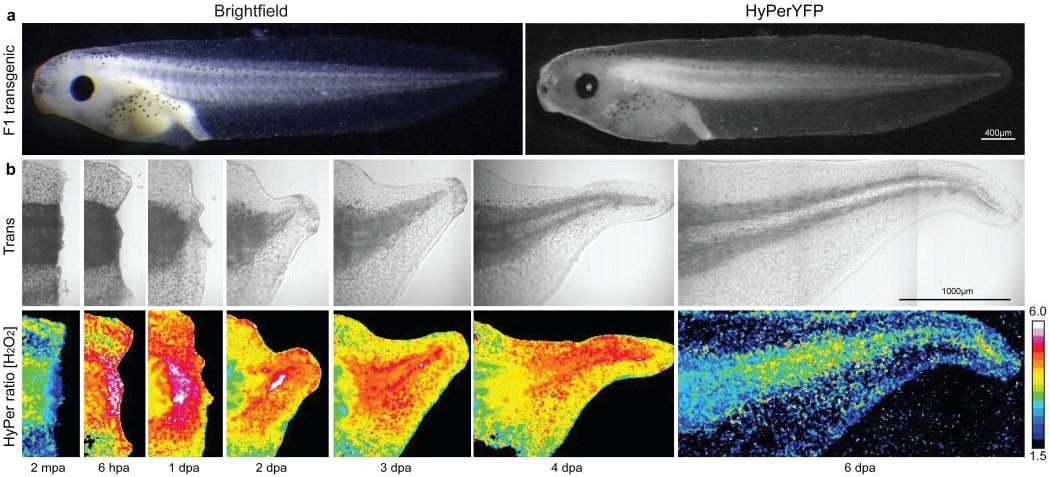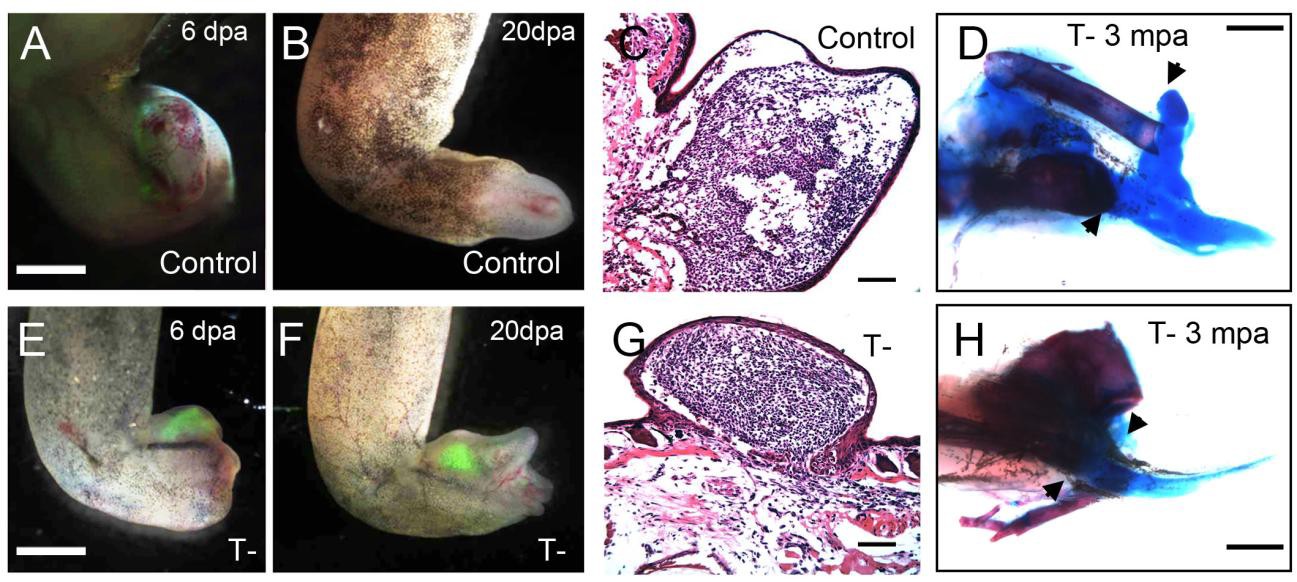Xenopus advances regeneration studies
Two Xenopus labs studying tissue regeneration recently published important results that could have big implications for research into human healing and regeneration.
Enrique Amaya’s group at the University of Manchester made a surprising finding after studying how tadpoles re-grow their tails. Xenopus regrow their tail within a week following amputation through the coordinated activity of numerous growth factor signaling pathways, including the Wnt, Fgf, Bmp, Notch and TGF-β pathways. Love et al. (2013), in a paper published in Nature Cell Biology, show that amputation of Xenopus tadpole tails also induces a sustained production of reactive oxygen species (ROS) during the entire process of tail regeneration, and demonstrated that injury-induced ROS production, an oxidative process, is an important regulator of tissue healing and regeneration. This finding forces us to reconsider the beneficial and harmful effects of oxidants and antioxidants in human health.
Xenopus also regenerates its limbs at early developmental stages, but loses this regenerative ability during metamorphosis. Jonathan Slack’s lab at the University of Minnesota’s Stem Cell Institute successfully show that post-metamorphic frogs can form new ‘hands’ after receiving transplants of larval limb progenitor cells published by Lin et al. (2013). These regenerated autopod segments had increased bone formation and a degree of proximal-distal segmentation after the treatment with Thymosin β4. In principle, similar methods using induced pluripotent stem cell (iPSC) technology could be used to assist human patients replace tissues lost through amputation.
Last Updated: 2013-11-01

